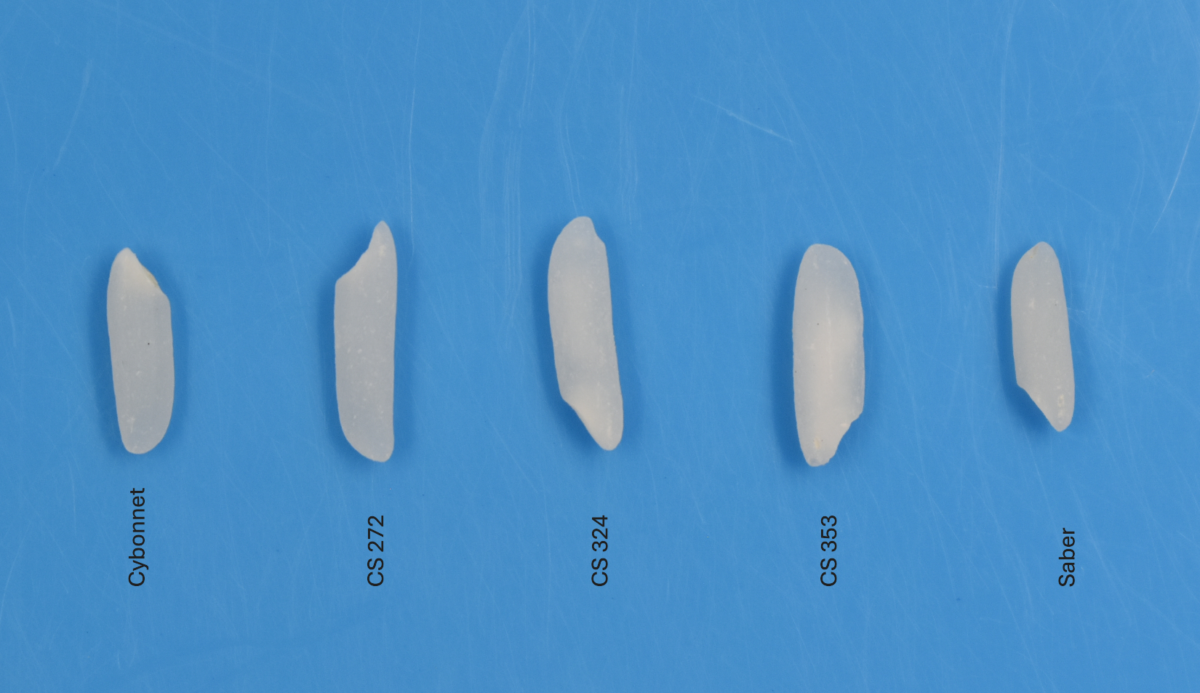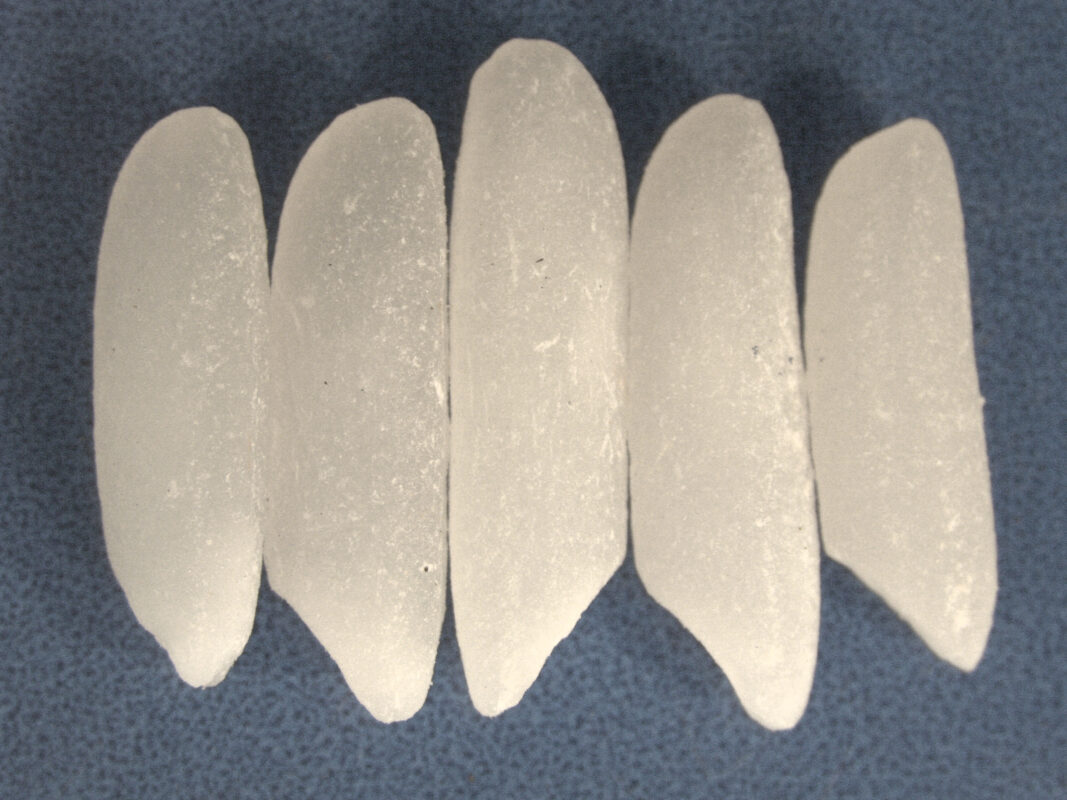The United States Department of Agriculture (USDA)’s Agricultural Research Service (ARS) announced that seeds from three rice germplasm lines will be available in its Genetic Stocks Oryza (GSOR) Collection starting on January 3, 2025.
The rice germplasm lines are named Cybonnet/Saber #272 (CS272), Cybonnet/Saber #324 (CS324), and Cybonnet/Saber #353 (CS353). Each line shows resistance to blast (a fungal disease), has low chalk, excellent milling quality, and good yield.



These lines were selected from a cross between “Cybonnet” and “Saber” rice cultivars. Notably, CS353 benefits from having a longer grain length (7.88 millimeters) and a greater length-to-width ratio (3.58 millimeters) than both of its parents (the length-to-width ratio of Cybonnet is 3.38 millimeters and Saber is 3.24 millimeters). The grain length of CS324 (7.06 millimeters) is comparable to Saber (7.14 millimeters). CS272 (6.83 millimeters) has a slightly shorter grain than Saber.
Chalkiness, one of the most important factors in determining the market price and quality of rice grains, is determined by interactions of rice genes with environments. Chalkiness is the opaque discolorations on rice grains that commonly occur when grains are developed at high temperatures. Low chalk is a preferred trait by consumers and often receives higher prices. CS353 is similar to its parents in chalkiness and has very low chalk, while CS272 and CS324 are significantly less chalky than both of their parents.
The rice germplasm lines were co-developed by the USDA-ARS Dale Bumpers National Rice Research Center and the University of Arkansas System Division of Agriculture’s Rice Research & Extension Center, both, located in Stuttgart, Arkansas.
More information about the three rice germplasm lines is published in the Journal of Plant Registrations.
Seeds will be available for five years through the USDA’s Genetic Stocks Oryza (GSOR) Collection.
Seeds have been deposited in the USDA-ARS National Laboratory for Genetic Resources Preservation in Fort Collins, Colorado, and will be maintained and distributed by the USDA-ARS National Small Grains Collection in Aberdeen, Idaho, where seeds will be available in limited amounts (3 grams) after January 2030.
The Agricultural Research Service is the U.S. Department of Agriculture’s chief scientific in-house research agency. Daily, ARS focuses on solutions to agricultural problems affecting America. Each dollar invested in U.S. agricultural research results in $20 of economic impact.
###